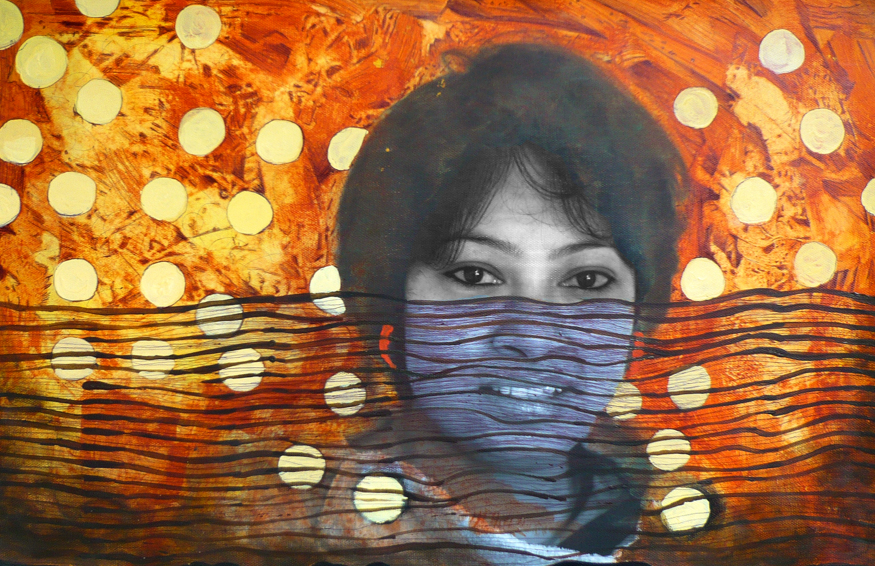

© Antonio Nodar / Bidhata KC
Bidhata K.C. is a contemporary artist based in Lalitpur, Nepal, born in 1978. She is known for her innovative approach to art, utilizing installations, paintings, and prints to explore themes of identity, material culture, and the interplay between traditional and modern elements in daily life.
Education and Career
Fine Arts Background: Bidhata K.C. studied at the Fine Art College in Nepal, where she developed her artistic skills and philosophy.
Recognition: In 2011, her painting Marginalized Identity received a Special Mention Award at the National Fine Art Exhibition in Nepal. She was also represented by the Nepal Art Council at the India Art Fair in 2016.
Exhibitions: She was one of the 15 commissioned artists for the 2017 Kathmandu Triennale and has participated in various exhibitions that highlight her unique perspective on contemporary issues.
Notable Achievements
In 2018, she was honored as the Artist of the Year among the 100 Most Influential Women of Nepal and received the Australian Himalayan Foundation Art Award.
In 2022, she was selected by the U.S. Department of State to participate in the Social Change Through the Arts initiative under the International Visitor Leadership Program.
Artistic Themes and Works
Bidhata K.C.'s work often reflects her ongoing exploration of Himalayan heritage. One of her notable installations, Out of Emptiness, features discarded tin cans transformed into sacred prayer wheels. This interactive piece invites viewers to engage with Buddhist traditions by spinning these repurposed objects while contemplating themes related to waste management, globalization, and cultural identity. The installation highlights the tension between traditional practices and modern consumerism, encouraging participants to fill the empty cans with their thoughts and prayers.
Through her art, Bidhata K.C. creates striking narratives that resonate with contemporary issues while drawing inspiration from Nepal's rich artistic traditions. Her work continues to contribute significantly to the dialogue around identity and cultural transformation in Nepal.